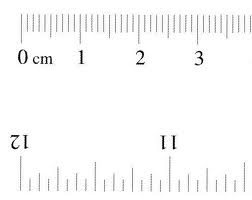
One thing you might not know about me is that I'm very handy with the metric system. Not only do I have a pretty good "mental image" of just how big a centimeter, liter, or meter is, I am also pretty quick at converting into our more usual English system. Maybe this seems like a useless skill to you, but I can tell with absolute honesty that it was a wonderful ability to possess when my micropreemie daughter was in the NICU... all the measurements there- from weight to length to how much she was eating- were logged in the metric system. I was one of the few parents who didn't always have to scramble to the conversion charts on the wall. Want to feel a little more competent with the metric system? Here are a few things to learn:
- First of all, over 95% of the world uses the metric system. We are the exception here, not the rule. Much like a second language, it's definitely not a bad thing to learn. Ignorance is NOT bliss, in my opinion...
- The metric system is all a system of 10s... everything is based off this. To move to smaller or larger units of measure, you are always multiplying or dividing by 10, 100, or 1000. This is far simpler than our English method of 12 (inches in a foot), 3 (feet in a yard), 4 (quarts in a gallon), 5,280 -what in the world???- (feet in a mile), etc...
- There are approximately 1.6 kilometers in a mile. Incidentally, we seem to like to use kilometers in this country, at least for our races. I guess "5k" sounds more impressive than "3.1 miles". ;)
- There are 2.54 centimeters in an inch. If you can just remember that, you can convert most "non distance" measurement quite easily!
- The next one easy for me to remember is this: There are 454 grams in a pound. (I think I remember those two "54s" together...) My micropreemie weighed 620 grams at birth. It was important to keep track of her weight in grams because it was a much more precise system for tracking weight loss and gain. In a full-term infant, ounces are sufficient. Not so for these teeny tiny ones.
- A liter and a quart are very, very close in size. No, that is not precise. But it'll get you by in the real world. It is rare that it will make a huge difference to interchange those two units of measure. (If you're a real perfectionist, 1 liter = 1.05 quarts.)
- Here's my favorite metric conversion to learn. I call it the "rule of 30". It goes like this. One ounce (whether liquid or weight measure) equals 30. Thirty what, you may wonder? Well that depends. One ounce (in weight) equals 30 grams. One ounce of liquid equals 30 grams, 30 mL (milliliters) , or 30 cc (cubic centimeters). When my tiny baby first started eating breast milk, she received 2 cc at each feeding. That's only 1/15th of an ounce. Or, if that's too hard to visualize...
- There are 5 cc (or 5 mL) in a teaspoon. Thus, my little girl was getting just under a half teaspoon at each feeding. (Believe it or not, I always ask the doctor or pharmacist for my children's prescriptions in cc's instead of teaspoons... I find it easier to be accurate!)
- A speed limit of 55 mph is roughly equal to 85 kilometers per hour. If you can remember that one, you'll have a decent idea whether or not you're speeding when traveling in any of the 95% of the world that uses the metric system!
- That's all I've got... what questions do you have about the metric system? Do you like it? Use it? Feel comfortable with it? Let me know!
This post is linked up to Top Ten {Tuesday}







1 comment:
Hi there! Today is my first time to your site. I came here from moneysavingmom.com. Thanks so much for sharing your story of delivering your 24 week old baby--very touching.
Here's my metric question:
Do you have any tips for easily and quickly converting between Celcius and Fahrenheit?
Thanks!
Post a Comment